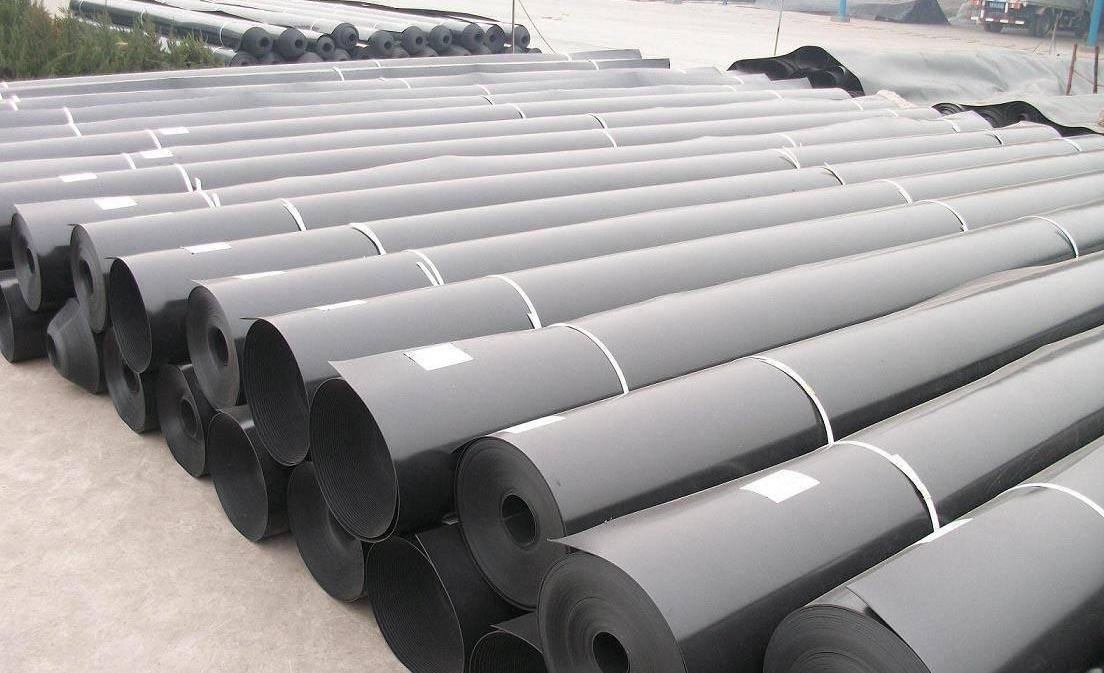How to Weld Composite Geomembrane
Generally, in the process of renovating water conservancy engineering buildings, composite low cost textured geomembrane is the product most used as a raw material for the waterproof layer. The most important thing for the renovation of engineering projects is the quality of splicing quality. The quality of splicing is to determine the geomembrane An important factor in the success and failure of the waterproof layer. So what should be done when welding is carried out to improve the quality of repairs?
The splicing method is generally selected by the hot-melt welding method. The membrane and the membrane are usually selected by a dual-drive self-propelled aquaculture geomembrane manufacturers welding machine. The total width of the welded steel bars is 12cm. The two welding rooms have a 12mm wide mouth, cloth, and cloth. Hand-held bagging machine and polyester thread T-shaped seam are used.

Note that before the welding is announced, test welding should be carried out according to the characteristics of the climate on the construction site, and the moving speed and welding temperature should be clarified. During the whole construction process, the moving speed of the automatic welding machine should be controlled at 0.7 ~ 1.3m / s, and the welding temperature should be 260 ~ 280 ℃, to ensure that the welding quality of the waterproof geotextile exceeds the requirements of the design plan. Before welding, it is better to pad this long wood board under the seam of the high quality aquaculture geomembrane, so that the brazing and hot-melt welding machine can move on the flat base to ensure the welding quality. In addition to the quality of raw materials, if you want to further improve the characteristics of waterproof geotextiles, you must work hard during construction. In order to facilitate the construction of the project and ensure the quality of the splicing, the general workers usually use a large format for waterproof polypropylene nonwoven geotextile factory prices to reduce the amount of splicing on the spot. Before the construction of the project, according to the width of the raw materials and the length of the spot, it is necessary to cut the appropriate length into the factory and splice it into a block that meets the specified specifications and stack it into a roll.
The non-composite layer pre-buried about 10cm on both sides is to facilitate the lateral connection of the low price aquaculture geomembrane. The damage of the geomembrane during welding and cutting mainly occurs at the weak position of the base where the welding area and the geomembrane meet. The welding construction site should be highly valued.
The construction of geotextiles is carried out under windless weather conditions, so as to ensure that the construction quality of wholesale polypropylene nonwoven geotextile meets the standards we want, but sometimes the conditions are not allowed and it needs to be carried out in windy conditions. What should we do at this time?
The laying of geotextiles in windy environments is generally done by manual rolling in the direction of the wind. After laying, the geotextile should be pressed with a woven bag filled with soil. The high quality HDPE geomembrane should be properly left with a deformation allowance. The installation of filament or short filament geotextile is usually done There are several methods for joining and stitching and welding. The width of stitching and welding is generally more than 10 to 15cm, and the width of overlap is generally more than 20cm. Geotextiles that may be exposed for a long time should be welded or stitched.
In the strong wind environment, all the stitching of the geotextile must be continuous construction, and the stitching must be strong. Before overlapping, the geotextile must overlap 150mm. The stitches are at least 25mm away from the edge. The stitched polyester nonwoven geotextile for sale seam includes 1 line of chain lock chain seam According to the law, the thread used for sewing should be a resin material with a tension of more than 60N. Any “leak stitch” on the sewn geotextile must be re-stitched in the affected area.
When preserving geotextiles, it is also necessary to pay attention to that they cannot be stored in water and uneven places, and the damaged polyester nonwoven geotextile factory price must be repaired in time. It is also normal for laying progress to be slower than normal weather in the windy environment. The phenomenon, so we must pay attention to laying it, so as to avoid wasting our financial and material resources.
